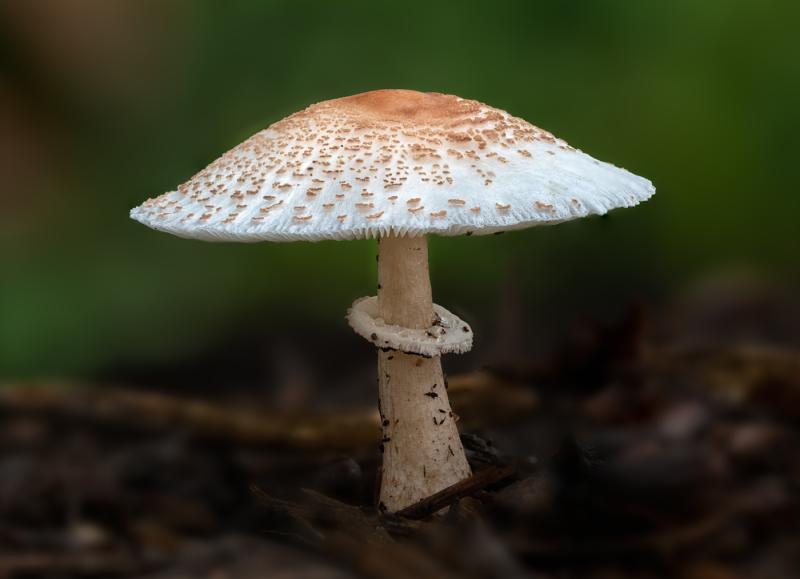The bartender told the mushroom, “I can’t serve you,” and the mushroom replied, “Why not? I'm a fun guy!” Fungi grow in our gardens naturally. In nature, there is something called “mutualism,” meaning a mutually beneficial symbiotic relationship. For instance, termites eat wood for the cellulose and nutrients but they cannot digest it. Inside their guts, termites have bacteria and protozoa that break down the cellulose fibers in wood and turn it into food that the termites digest. The gut bacteria are happy and the termites are happy.
Garden soil contains mycorrhizae fungi that do the same thing for plants. Because these fungi are unseen, we often overlook the important role they play in the garden. Mycorrhizae are fungi that have a symbiotic relationship with the roots of several plants. The fungi even give some protection against soil-borne diseases, and help plants tolerate drought, hot weather and poor soil.
The fungus and the plant get benefits from each other, and unlike parasites, neither the plant nor the fungus suffers any ill effects as a result. Because the fungus cannot photosynthesize, it gets all of its necessary carbohydrates from the host plant. In return, the mycorrhiza takes nutrients from the soil and feeds the plant. Plant roots only occupy 0.5% of the topsoil and even less of the subsoil. The mycorrhizal fungi form a network that greatly increases the absorption surface area of the roots.
Many plant nutrients, such as phosphorus, move slowly in the soil and are unavailable to garden plants. So even if your soil is rich, your plants simply cannot absorb all of the nutrients. Most of the phosphorus in the soil is in an insoluble form and not available to plant roots without mycorrhizal associations. These same mycorrhizal fungi even form associations with litter or compost to get nutrients that otherwise are unavailable. Because these fungi are far more extensive than the plants’ roots alone, they actually ‘mine’ the soil for water and nutrients.
The network of fungal growth can reach up to 700 times more soil than the plant roots alone. You can increase the natural levels of mycorrhizal fungi by using compost and applying organic mulch such as well-rotted horse manure or dead leaves. You can buy mycorrhizal fungi and put some in the planting hole when setting out new plants. This will help transplants get established faster and boost healthy growth, because the fungi supply additional nutrients and water.
A few plants do not benefit from mycorrhizae. Those in the Brassica family, which includes vegetable crops such as broccoli, Brussels sprouts, cabbage, cauliflower, kale, rutabaga, and turnips, do not form associations with root fungi. Flowering plants in the Brassica family include candytuft (Iberis), sea kale (Crambe), wallflower (Erysimum) and woad (Isatis tinctoria).
The biggest benefit of using mycorrhizal fungi is as a one-time application when planting, even when growing from seed, including lawns and bulbs.
For a healthy garden, use mulch with organic material to encourage mycorrhizal fungi, or buy mycorrhizal fungi and add it when planting or as a side dressing for established crops. You scratch my back, and I’ll scratch yours.




















































